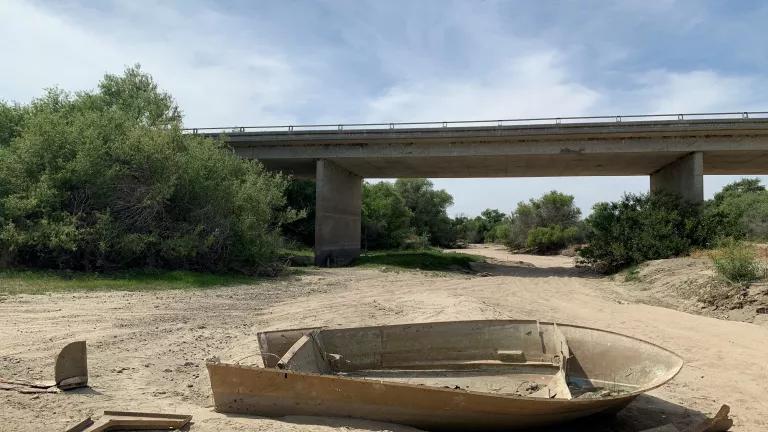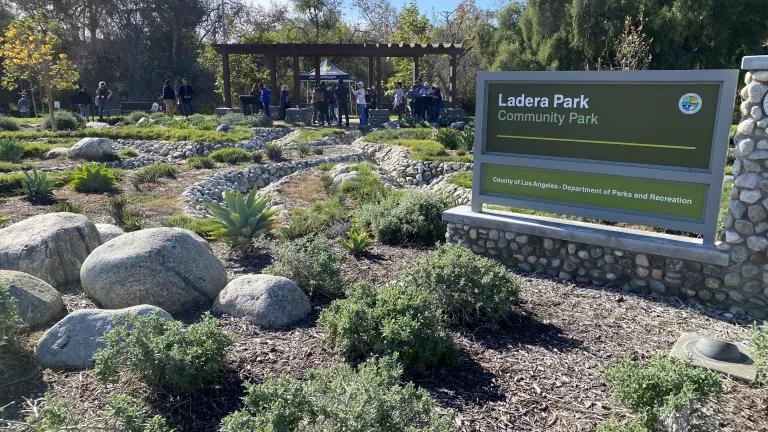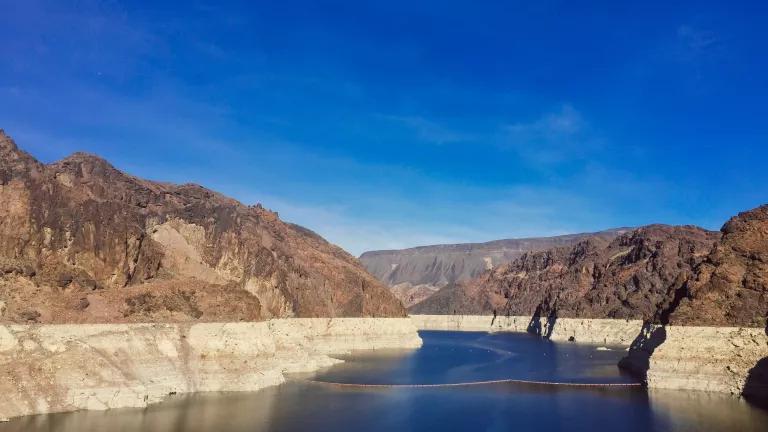Is This the End of California’s Rivers?
Documentary film River's End explores the threats to California's rivers and fisheries, and the people fighting to save them.

San Joaquin River at Highway 152, May 2022
Tom Biglione
If you care about California’s rivers, I’d encourage you to watch the beautiful documentary film River’s End, which is showing on PBS stations across the country this month and streaming online. The film documents the ongoing threats to California’s rivers and fisheries caused by unsustainable water diversions – which threatens thousands of salmon fishermen and women, Delta communities, Native American Tribes, and all of us who depend on healthy rivers and a healthy Bay-Delta estuary.
It may seem strange to talk about the end of California’s rivers in a year when so many of them are flooding, after months of storms that battered the state and produced an epic snowpack. As flowing rivers wash away the nightmare of California’s most recent drought, they are also creating new crises of flooded communities, particularly poor, disadvantaged communities.
These raging rivers are also creating major new threats to California’s rivers and fisheries, as unsustainable corporate agribusinesses seek to capitalize on the temporary deluge of water to demand new dams, more water diversions for groundwater recharge, the Governor’s Delta tunnel project, and more waivers of environmental standards that protect the environment and require water to flow in our rivers. And while there are opportunities to sustainably divert more water in epically wet years like this, all of these projects want to take more water in the drier years as well, and as a State, we seem to never be willing to limit water diversions from California’s rivers and the Bay-Delta enough to protect salmon and other native fish and wildlife or the communities that depend on them.
Sadly, the ecological crisis in the Delta has gotten worse since River’s End finished filming. The Bay-Delta and its native fish have been hammered by another record drought, made worse by more waivers of water quality standards so that agribusinesses could divert more water from the Bay-Delta watershed, leaving more species heading towards extinction, and more harmful algal blooms that threaten human health and safety. Things have gotten so bad that this year, the federal government will completely close the salmon fishery throughout California and most of Oregon, for only the third time since 1849.
When the salmon fishery closed in 2008 and 2009, it was supposed to be a wakeup call.
Instead, the salmon fishery is entirely closed again in 2023.
At the end of the 2013-2015 drought, the State Water Board issued this order calling for a better plan for drought, explaining that the practice of waiving environmental requirements that protect salmon and the Delta during the drought in order to increase water diversions were unsustainable and leading to extinction.
Instead, the State didn’t prepare a plan for drought and repeated the mistakes of the prior drought, taking the environment’s water by waiving the inadequate minimum environmental requirements not just in critically dry years, but even in this very wet year as well.
When the State Water Board adopted new flow requirements for the Tuolumne, Merced, and Stanislaus Rivers in 2018, as captured in River’s End, it promised these requirements would be fully implemented by 2022.
Instead, the State has not implemented these new standards at all. Nor has the State completed the update of the rules governing how much water can be diverted from the Bay-Delta watershed, and how much must flow through this amazing estuary.
I’d argue that River’s End is showing at the right time, as the future of California’s rivers is being decided by politicians in Sacramento and Washington D.C., by a Newsom Administration that seems determined to satisfy the unsatiable demand for diverting ever more water from our rivers by waiving existing environmental safeguards and delaying new rules, building new dams and an environmentally destructive Delta tunnel project, and greenwashing these plans for extinction. If fishermen, Tribes, and everyone who cares about California’s rivers don’t demand that things change, the next few years may indeed be the end of healthy rivers and fisheries in California.
After all, what is a river without water?

San Joaquin River (Reach 2), July 2, 2009
San Joaquin River Restoration Program

San Joaquin River (Reach 2), October 15, 2009
San Joaquin River Restoration Program
When I began working at NRDC in 2008, nearly sixty miles of California’s second longest river had been bone dry since the 1950s (except during the rare flood years), as all of the water that would have naturally flowed downstream was instead diverted and stored behind Friant Dam. When the dam was completed, the river was turned off, wiping out the magnificent salmon runs, which used to be so loud during spawning season that the splashing salmon would keep people who lived near the river up at night. Thanks to NRDC’s decades of litigation and 2006 settlement agreement, in 2009 water began to flow again all the way down the San Joaquin River, as the literal end of the river moved slowly downstream until it finally connected with the Merced River as nature intended. Nearly a decade later, spring-run salmon successfully returned to spawn in the San Joaquin River. Yet despite this progress, the Restoration Program remains handcuffed, with less than half of the required river flows being released over the past decade, the river completely dewatered last year, and major restoration projects delayed.
River’s End provides a compelling window into the decades long fight over how much water will be diverted from California’s rivers, and the fate of our rivers and fisheries. As the San Joaquin River example demonstrates, in most years we collectively have the power – with some 1,400 dams and reservoirs, massive canals and pumping plants – to decide whether to turn off our rivers, and let our native salmon wither away, along with the jobs and communities that depend on and cherish them. But the San Joaquin River also demonstrates that it doesn’t have to be that way.



